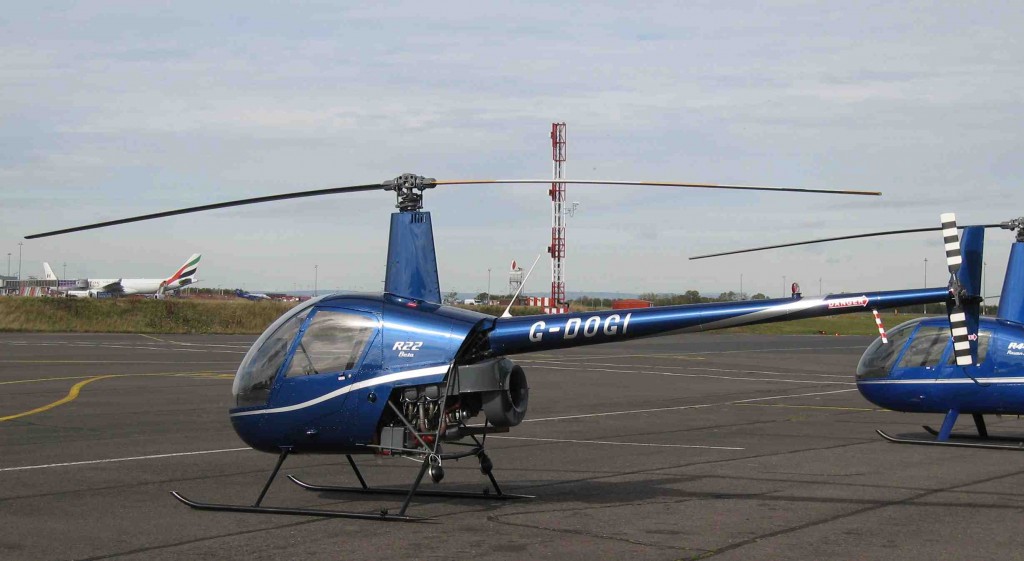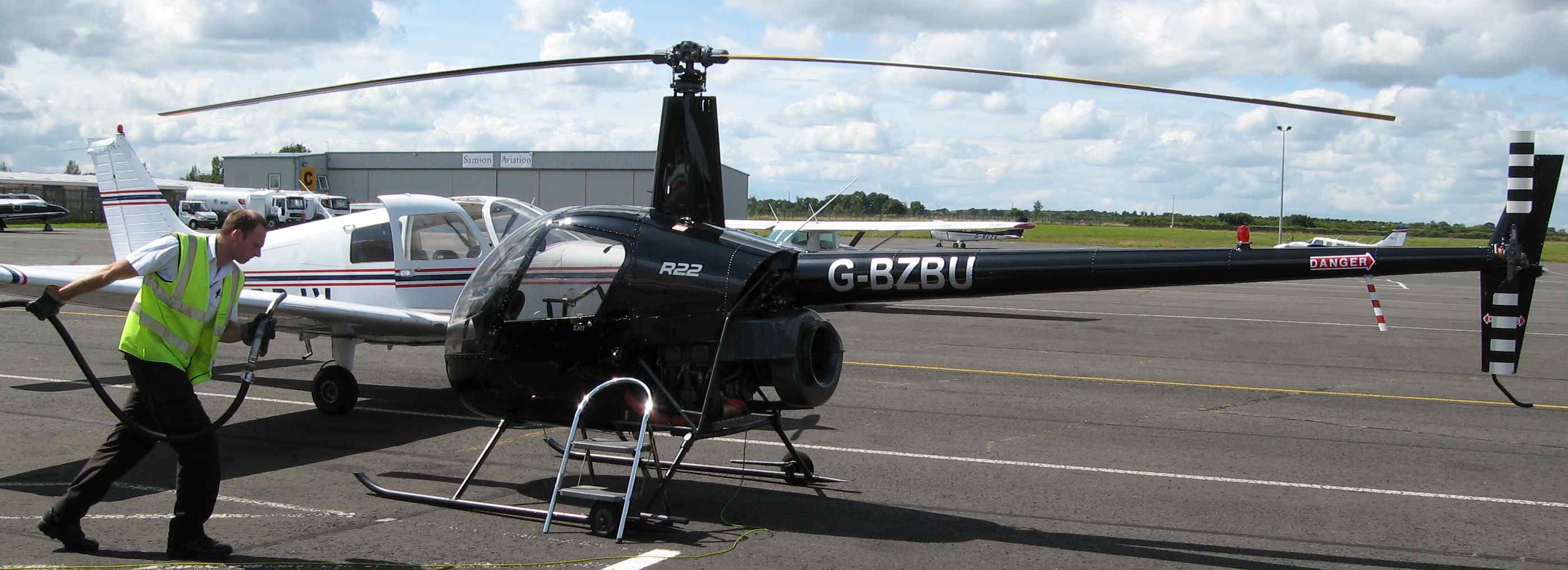Well, I was gutted last night when I learned that the Carlisle trip (planned for today) wasn’t going ahead for various reasons. I found out when I was half-way planning the routing, just to make things even more frustrating. But, all is not lost, with a great lesson taking its place.
Sunderland International Air show is going on today at the seafront, so Newcastle Airport was hectic traffic-wise with all the departing show traffic. But, Steve said he could do a lesson nonetheless, so I went to EGNT.
He was still out on a trial lesson, so while I waited I planned the routing for a trip I wanted to do. Steve had said that the next lesson would be some navigation to a certain spot. I was keen to do some more autorotation practice, so I had planned a lesson in my head, that involved a navigation to Esh Winning (where we live), and then on the way back, I’d hope we’d do some autorotation practice.
I put the idea to Steve and he was very happy with the plan. He told me to book out via Blaydon VRP, which I did and then went out to check over the helicopter.
It was great being out on the General Aviation (GA) Apron as all the fast jets for the airshow were there. There were F16s, RAF Hawks, Apache Helicopters, a Chinook taking off, some aerobatic planes taxi’ing. It was awesome. I took some video footage today of the GA Apron, and hopefully will post the edited highlights tomorrow. I also video’ed the whole flight today with a helmet cam, but that will need heavy editing, so again, hopefully tomorrow, that’ll be up.
So, I went out to check out the heli. It was VERY close to the bowser (about 10 feet from the rotor blade, and VERY close to a beautifully decal’ed Hawk (probably about 10 feet too). As I was doing the checks around the heli, the pilot was in the Hawk, prepping it for departure. He’d started up and taxi’ed off before I’d finish my checks. I think word has got around about my hovering skills 
Busy on R/T today. I asked for startup, and was granted that straight away. Whilst I was waiting for things to get upto speed, I called for clearance, but was asked to “Standby”. 5 minutes later, Steve arrived, and still no callback, so Steve suggested a reminder call, and it worked, and we had clearance to go.
Once upto speed, call for taxi. I didn’t think Steve would let me liftoff so close to the bowser, but he did. Thanks Steve. I was pleased when we were clear of it. We taxi’ed past 4 fighter jets (2 on the left, 2 on the right), an Apache Longbow helicopter (I think) and a light a/c who’d taxi’ed ahead of us. And we hovered next to Foxtrot. Typical polite dp, I just hovered next to Foxtrot, thinking the light a/c was first and he should go first, but Steve just said to tell Tower we’re ready for departure and sure enough, we were given immediate takeoff clearance. Footage to follow……
For the first time ever, we headed south ! Exiting the zone overhead Blaydon (Visual Reference Point). And then following the headings I’d worked out to get us to Esh Winning. Although I did set the headings and fly them, I was too much in awe of seeing the geography of the south of Newcastle to properly do the navigation. I had forgotten to time the legs, and was just navigating (with Steve’s help), by the 2 (bloody) big aerials between Newcastle and Esh Winning.
It took me 40-45 minutes to drive to the airport, it took 13 minutes to fly it in a helicopter. Straight line travel is awesome !
I’d warned kp that I was due (and what time), and she’d tipped off Tommy and Eileen (our neighbours) so when we overflew Esh Winning, I could see Tommy and Eileen in the drive, but couldn’t see kp and Michelle and Freddy who were visiting. I purposely had flown a safe height (probably about 800 feet agl), so they were just dots, but because I was looking for kp in the front garden, I didn’t see them waving in the back – I was too much concentrating on the flying.
We did a 30 degree turn out of Esh Winning and headed to the Windmill Farm at Tow Law, where we started the first of many autorotations. The first one was a simple (no turns) job. I was pleased that I controlled the rotor rpm correctly, and would have made a field into wind fine.
The next one was a 90′ turn autorotation. Again, that went fine, and then I think we did a 180′ turn auto somewhere near Kielder reservoir. That went fine too.
It wasn’t all good though. Although I had done what I told myself I MUST do, AVIATE then COMMUNICATE. I had totally AVIATED correctly, but had forgotten to do the Mayday call. But Steve did it each time, so it gradually sinks in to me !!!
I’ll get that next time.
A lot of learning to fly helicopters is getting so comfortable with something that it requires zero thought, that you can then concentrate on something else. For example, hovering used to take 150% of my CPU cycles to do it badly and now I can do a half decent job on 20% of my CPU cycles. In fact, at times, I’m not even thinking about it, which is great.
Once i get to that stage with auto’s, I’ll be able to do the Mayday call no bother.
So, all the autos went well. These were all autos with powered recoveries at about 300-500 feet.
Once we were getting close to the Newcastle Zone, we stopped doing them and I made the call for rejoin instructions and we were told to hold overhead the Tyne Bridges, which we duly did. The reason for the delay was the most sophisticated fighter a/c ever built (Typhoon) was on final approach and for some reason he had priority landing 
With him down, we flew onto left base leg for Runway 25, and then unusually Steve said something to Tower. I couldn’t hear what he said, just as he can’t hear what I say to tower, because of the headset setup G-MAVI has. We can hear each other without having to push any buttons (live setup I think he calls it), but it means we can’t hear what each other say on the radio.
It turns out he’d got permission to do an autorotation final approach to a powered recover at 5 feet and I’D be doing the whole thing. So exciting !!
I’d asked Steve before we left, if he’d mind if I call out what I’m doing and when I’m going to flare. Normally Steve does a running commentary, saying “Not Yet, Not Yet, Not Yet, Flare” as we come in without engine power.
I thought if I did it, Steve would feel more able to relax knowing that I WAS going to do the flare at the right point.
So, as we were coming in with a very fast descent rate, I was calling out “Not Yet, Not Yet, Not Yet, Nearly going to Flare, Flaring Now” or something like that. I did the flare and the flare (I thought) was good. We ended up with zero ground speed and zero vertical speed, so all was left was the final cushion. So, as Steve says, it was then time for “Pop”, pull the collective up and recover to a 5 feet hover. Well, there was a bit too much yaw, but that was my bad. Overall, I was really pleased with it. Steve later told me that the rotor rpm went a bit high. I have NO idea why it did this, so will have to ask next time.
This was the first time I’d done the whole thing from entry to recovery with no Steve input. As Steve later said, it’s a good autorotation if you can walk away alive and he said we would have done. Good enough for me.
The final bit was the best bit. The GA apron was still chocka block and the Hawk was back, meaning I had 10 feet (if not less) either side of me to get the heli down. Steve let me do it, credit to him. I went in nose first, and then had to do a 180′ yaw. It felt very close for the tail close to the fence and the bowser. Not sure if it will feel that close on the video footage. We’ll see…. But, I did the turn and landed it. It was a hard landing, but Steve said it was safe and it felt safe. But I didn’t fancy farting on for one of my 30-second kiss-of-a-touchdown landings with so little room for error.
So, great lesson. Loved it and the first one was some video to watch back.
Next lesson is more navigation, but more thorough next time. We going to (or I should probably say I am going to) navigate to Seaham, Durham Tees Valley airport (passing overhead), then Hexham then Newcastle.
Not sure when this week, but I’m already looking forward to it !
![]() I was gutted.
I was gutted.![]() It wasn’t pretty, not enough speed shaved off and a messy flare and bit of pedal work.
It wasn’t pretty, not enough speed shaved off and a messy flare and bit of pedal work.

